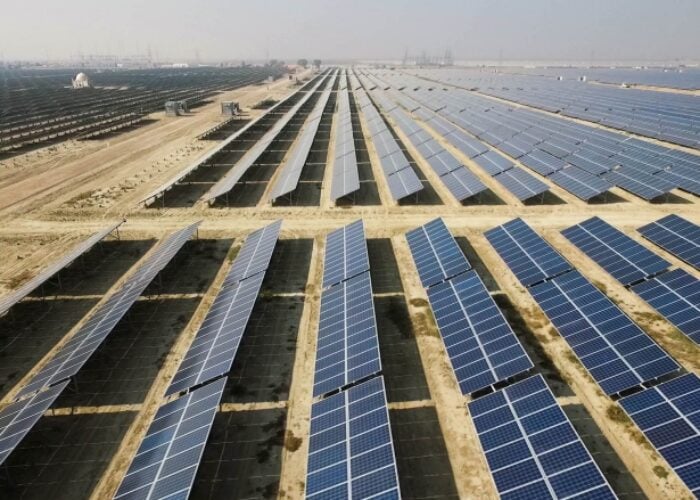India’s Ministry for New and Renewable Energy (MNRE) is to have its budget for the coming year slashed.
For the financial year of 2014-15 the MNRE has been budgeted INR441 crore (US$72 million). In the last financial year, the MNRE was provided a budget of INR1,500 crore for renewable energy initiatives (US$246 million), but only ended up disbursing INR426 crore (US$69 million) of that by the end of the financial year.
Unlock unlimited access for 12 whole months of distinctive global analysis
Photovoltaics International is now included.
- Regular insight and analysis of the industry’s biggest developments
- In-depth interviews with the industry’s leading figures
- Unlimited digital access to the PV Tech Power journal catalogue
- Unlimited digital access to the Photovoltaics International journal catalogue
- Access to more than 1,000 technical papers
- Discounts on Solar Media’s portfolio of events, in-person and virtual
Or continue reading this article for free
According to analyst firm, Bridge to India the finance ministry has taken the disbursement level for 2013-14 as a starting point for the forthcoming year and offered MNRE a much lower allocation.
Climate Parliament, a cross-party group of India’s pro renewables politicians, said there was “a significant gap between allocation and reality” in MNRE’s budget last year.
The statement also said the reduction in the budget this year compared to last year is “putting a serious question on the implementation of existing and planned renewable energy programmes”.
Bridge to India said the large gap in last year’s budget was because MNRE used the money to meet budgetary deficits rather than for intended renewable energy initiatives.
Climate Parliament highlighted that a large proportion of the MNRE budget relies on India’s National Clean Energy Fund (NCEF). The NCEF fund was created to fund research and renewable energy technology innovation – Climate Parliament has said the fund should purposefully not be used for paying of debts.
Tamil Nadu MP and member of Climate Parliament, K.P Ramalingam said: “It seems that resources from the fund are increasingly being used for the implementation of routine MNRE projects and activities. The use of this fund for certain specific and new renewable energy promotional schemes is still justified but using NCEF as a source for meeting the budgetary deficits of MNRE does not seem suitable.”
The NCEF was established in 2010 by former finance minister Pranab Mukherjee, by taxing INR50 (US$0.82) per tonne of coal to try and mitigate for alarming levels of pollution.
Baishnab Parida, also a Climate Parliament MP, stated: “This dismal budgetary allocation is a reflection of a lack of a balanced approach by the government,” adding that solar had been given far more preference over other renewables, such as wind and biomass.
The Climate Parliament statement said the cross-party group is hoping for a new government after the 2014 elections with “sound and long-term planning for clean energy”, adding that governance “is at the core of issues like energy security, climate change and energy access”.
Bridge to India reported the budget cut would wound rooftop solar policies the hardest, with companies building business models for funding that is now significantly reduced.
Bridge to India called for an end to the fluctuating MNRE subsidies for rooftop solar altogether, calling the MNRE subsidy “false hope”.
Bridge to India also advised MNRE to focus on alternative solar obstacles, such as ironing out connectivity issues.
Despite the predicted cut in subsidies, Bridge to India highlighted the success of measure not relying on subsidy, such as the Solar Energy Corporation India (SECI)’s tender for rooftop projects, which have resulted in an allocation of 25MW of rooftop solar, with a further 50MW planned. Also state net-metering state policies are expected to encourage the adoption of rooftop solar, without a subsidy.
Bridge to India speculated that recent announcements by the Indian government may have been to divert attention from the MNRE budget cut, particularly with a general election coming up in May. Last month India’s finance minister, Shri Chidambaram, announced 2GW worth of new large-scale solar projects as part of his interim budget speech.
Last year’s MNRE budget allocated INR150 crore (US$24 million) for grid connect solar power, and a total of INR600 crore (US98 million) for 4.33GW installed from various renewables, by March 2014.
For off grid solar power, INR400 crore (US$65 million) was allocated for 40MW. In total INR430 crore (US$70 million) was budgeted for 138MW of installed renewables.
For rural renewable energy, such as solar cookers, INR3 crores (US$492,000) was allocated with a INR150 crore (US$24 million) rural renewables investment total.
Research and development of all renewables, including solar and solar centres was issued INR160 crore (US$26 million), according to the outcome budget.
However it is unclear what proportion of these allocations will actually be paid.






